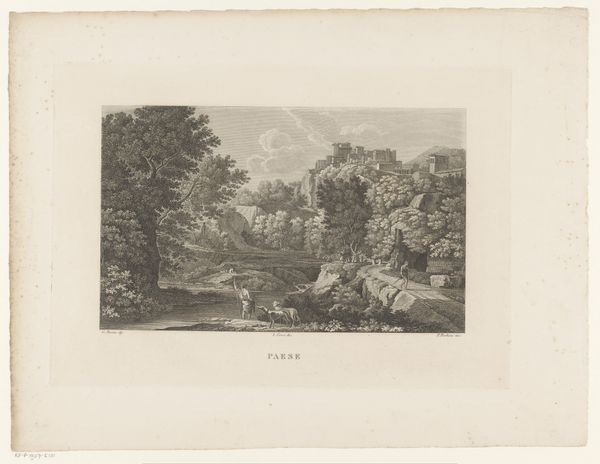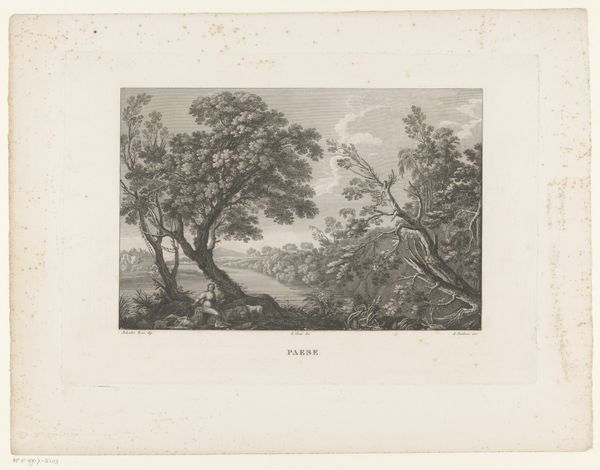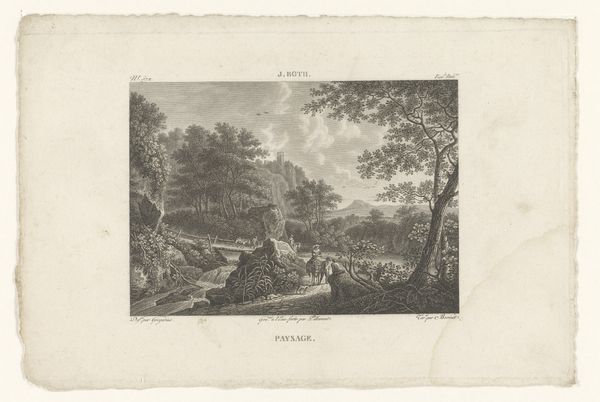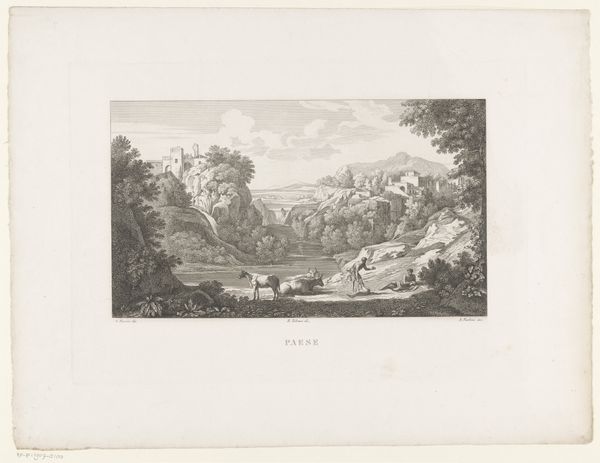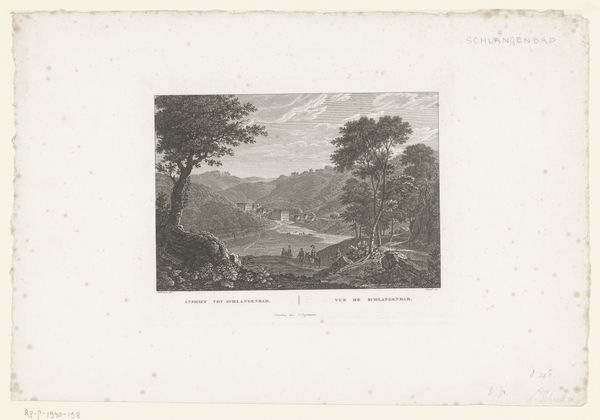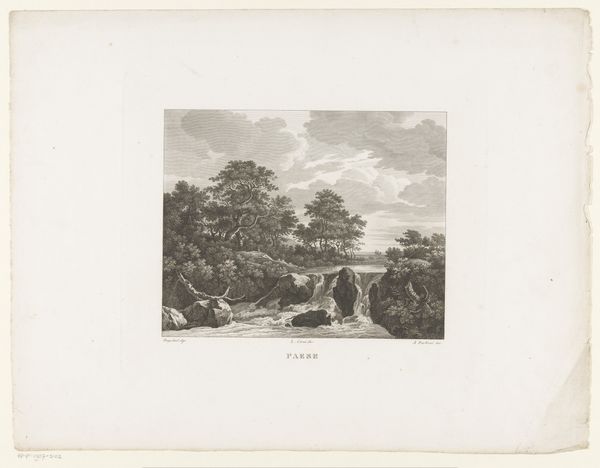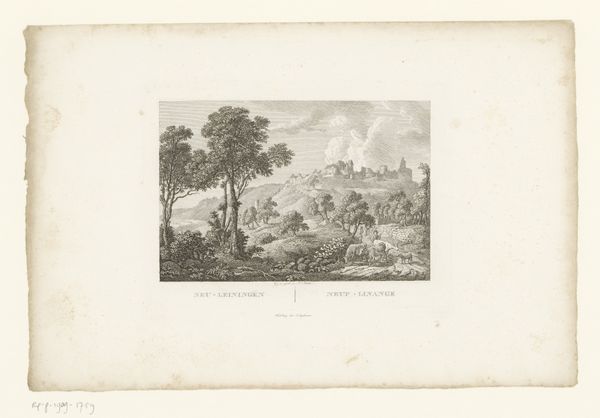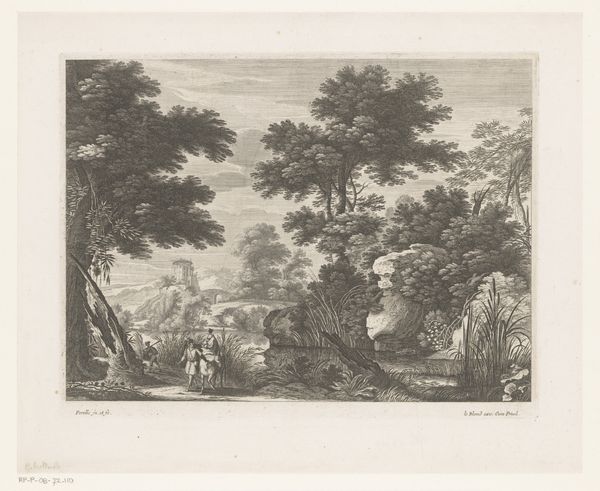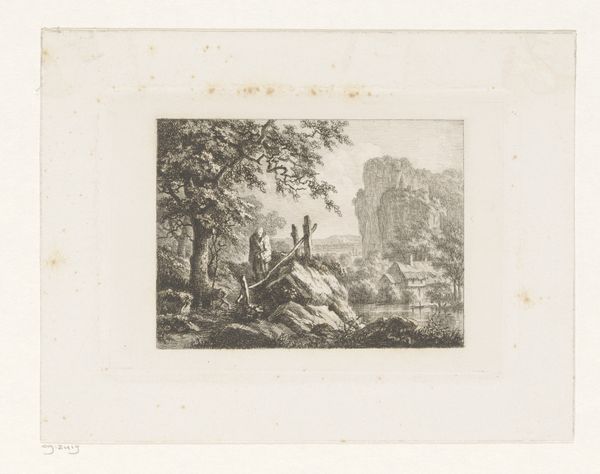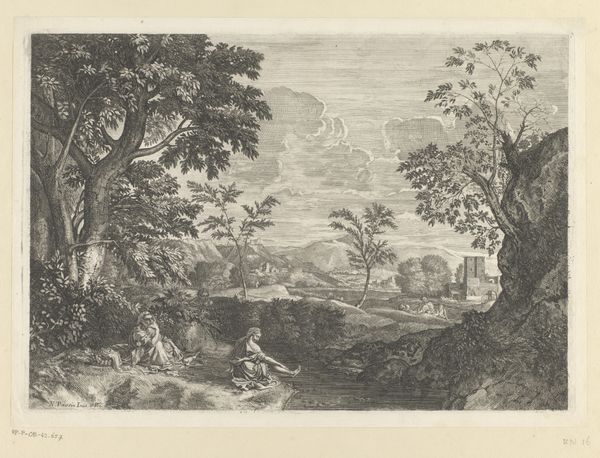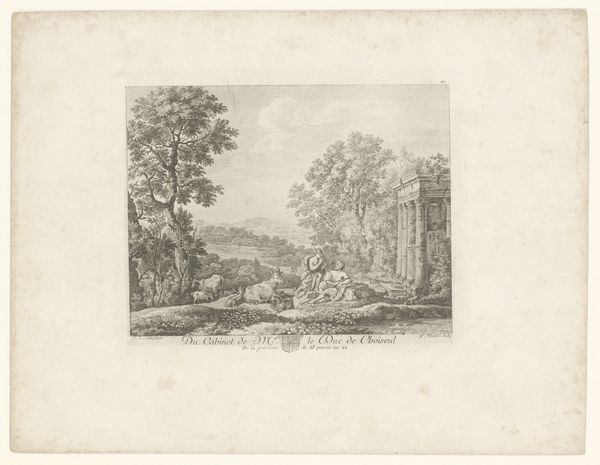
print, engraving
# print
#
landscape
#
romanticism
#
line
#
engraving
Dimensions: height 277 mm, width 325 mm
Copyright: Rijks Museum: Open Domain
Curator: This 19th-century engraving by Achille Parboni, titled "Landschap met wandelende figuren," presents a classical scene in monochromatic tones. Editor: It strikes me as immediately serene. The meticulous lines and balanced composition lend it a timeless quality, almost as if glimpsed from a dream. Curator: Yes, Parboni masterfully captures a landscape tradition that harkens back to the Romantic era’s fascination with nature and the sublime. Observe the wandering figures nestled at the base of the towering tree—tiny against the immensity of the setting. How might they serve to enhance our appreciation of nature’s grandeur? Editor: Those figures do a lot of work to signal scale. Placed there, we can reflect on human interaction with the environment—the idea of being a part of, but also separate from, its power. Are we meant to read some symbolism into their placement? Curator: The composition does seem intentional, doesn’t it? The arrangement follows the lines of the picturesque, in this balance of the tamed and wild that was really in vogue at the time, especially within gardens. The wandering travelers, in their leisurely stride, suggests this journey and exploration of oneself in communion with nature and the divine. This sort of pilgrimage can be tracked back to earlier depictions within Renaissance landscape painting as well. Editor: Interesting. I notice that Parboni employed only engraving, so there are no vibrant colors here to influence our response, leaving the interplay of light and shadow to create mood. The dark foreground and faded background create an emotional depth—a sort of nostalgic atmosphere. Do you find that to be successful? Curator: Absolutely. Consider also that landscapes were historically tied to nation building and conceptions of national identity and place. Through repeated visualizations in art and print culture, a connection with land would be established or reinforced, but also opened up for critique in various iterations. Editor: Thank you, it provides such insight on cultural perceptions when one considers Parboni’s "Landschap met wandelende figuren" through the lens of iconography and broader social history. Curator: My pleasure; there’s much to discover when images become cultural touchstones and when you begin to deconstruct what came before it and who came after.
Comments
No comments
Be the first to comment and join the conversation on the ultimate creative platform.
